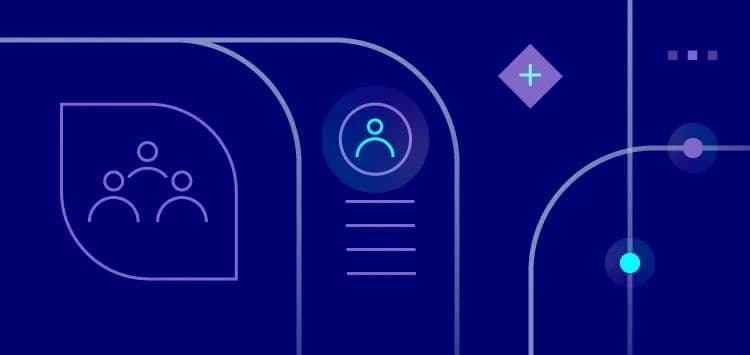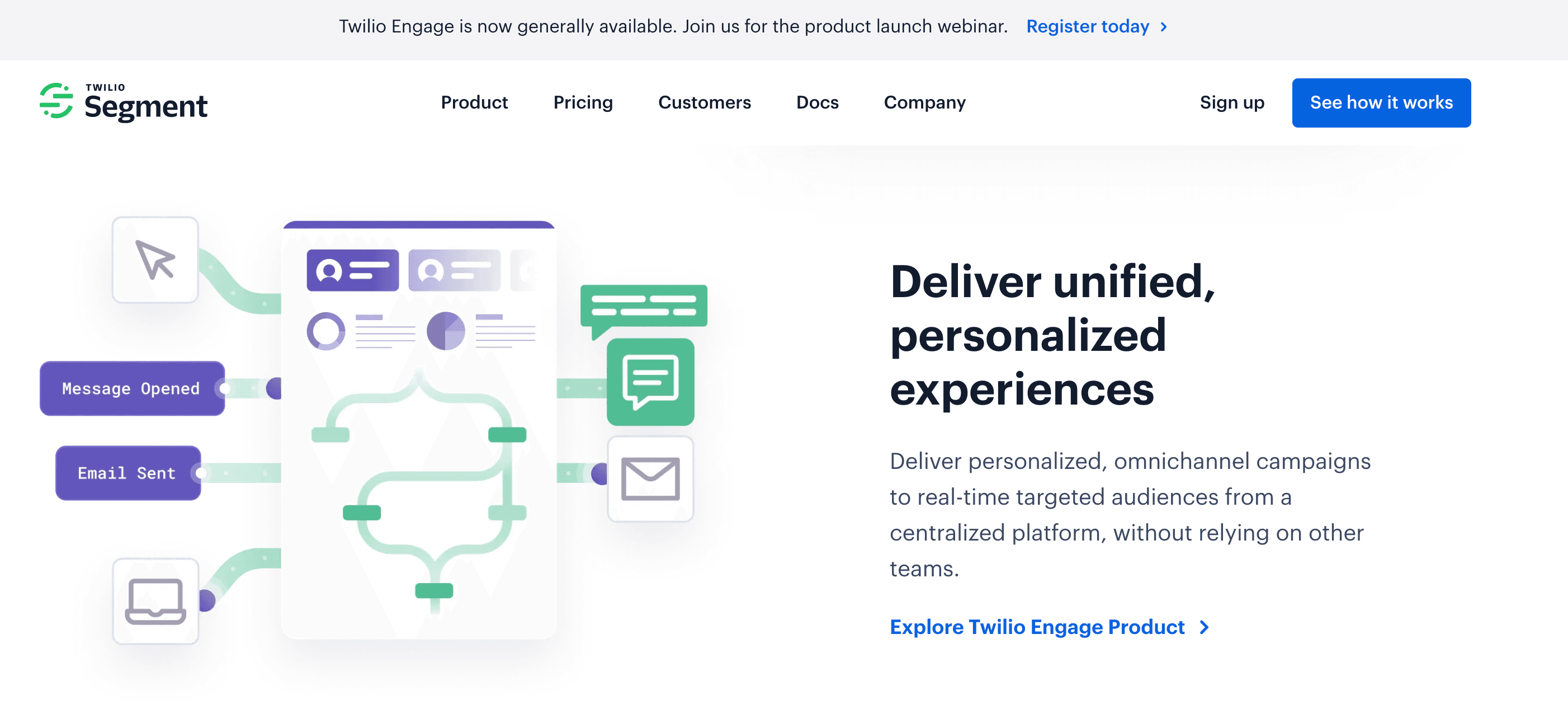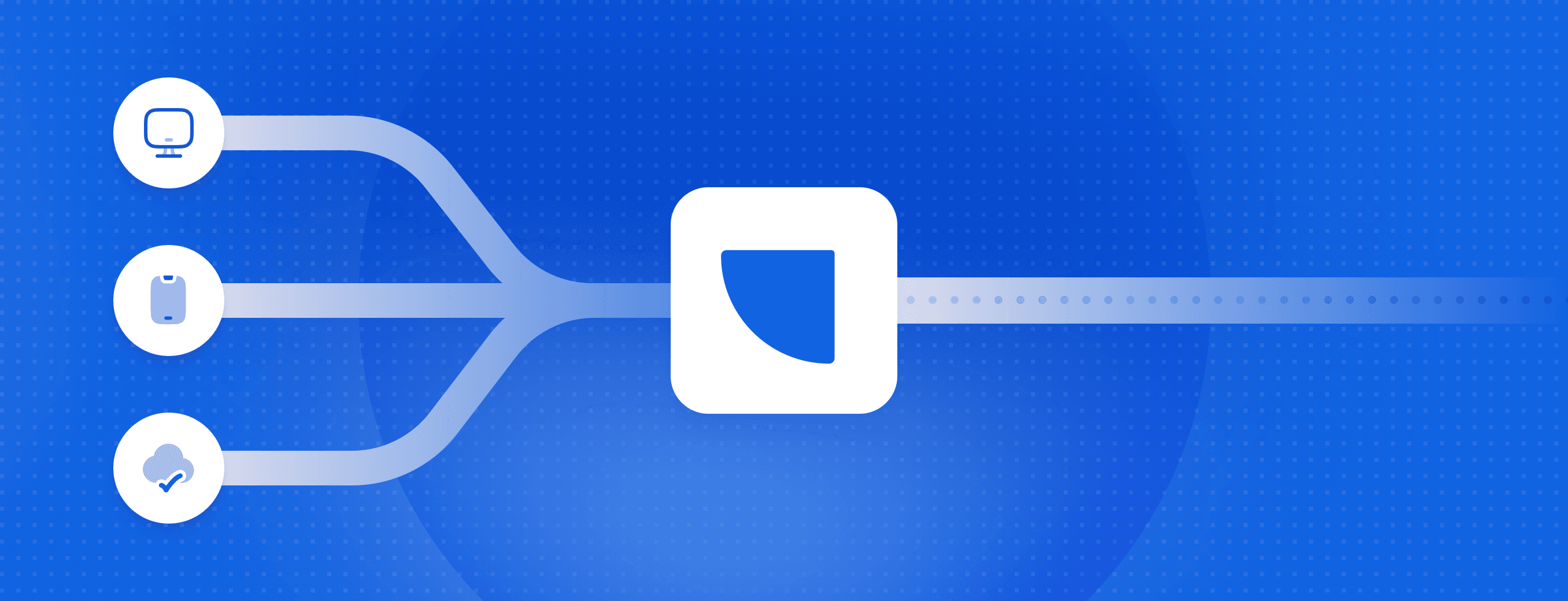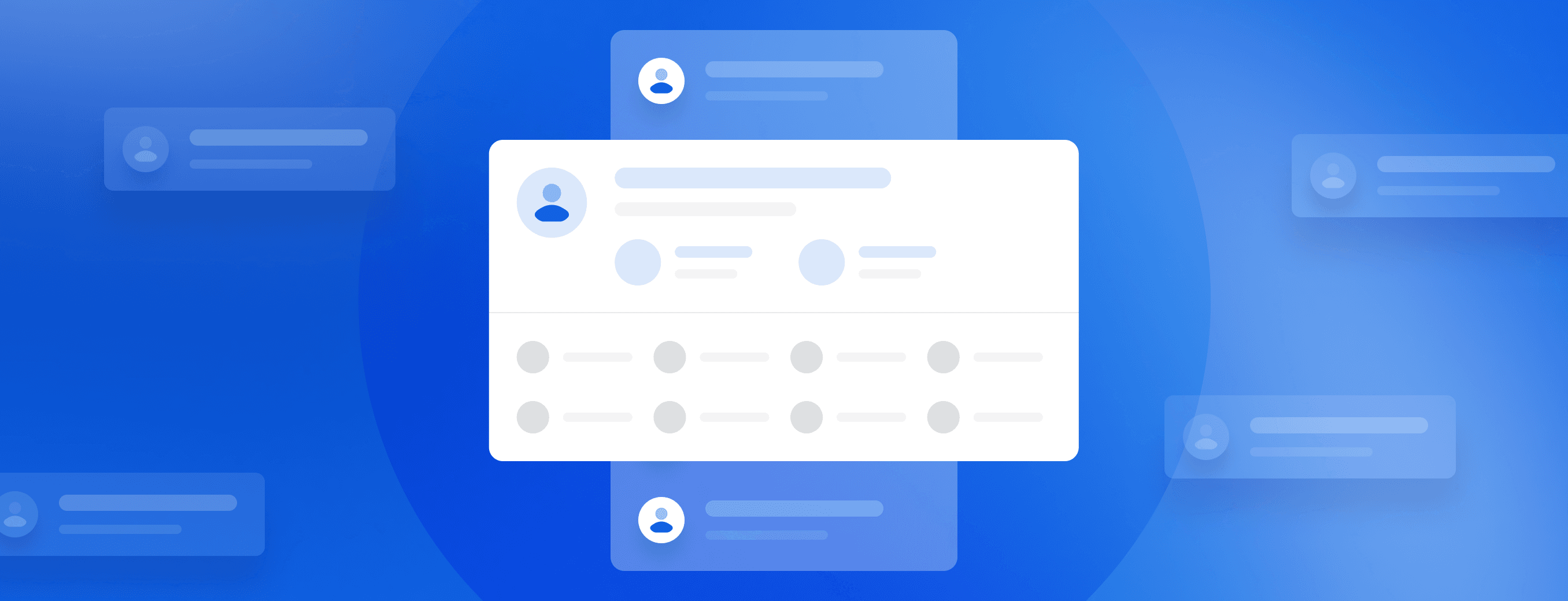Segment 2 years after the Twilio acquisition

Two years ago we wrote a post about why we believe Twilio acquired Segment.
Not much changed in the first year after acquisition, but right at the 12-month mark, Twilio launched Twilio Engage, a marketing automation platform built on top of Segment. We wrote a follow-up to our original post with predictions about what Engage meant for the future of Segment.
Twilio is now over two years into the acquisition, so our team took a look back at our two previous posts to see how close to the mark we were with our predictions and to evaluate Segment’s future based on Twilio’s most recent product updates.
Is Twilio leveraging Segment to move up market and overcome the low-margin, low-growth challenges of their API business?
Yes. The hard realities of their SMS business and their plan to combat that with Segment are now crystal clear.
In the original piece we noted that Twilio made their initial fortune on a low-margin, highly commoditized SMS gateway business. Low-margin revenue streams can be subject to low growth at scale, which would likely force them to move up market—and that is exactly what has played out.
At the time of the Segment acquisition Twilio’s stock price had tripled in the prior 6 months. Today, Twilio’s stock price reflects the challenges of their low-margin business, trading at only 2.2x revenue despite healthy growth.
Twilio’s recent multiple is less than half of Salesforce’s, which is trading at 4.5x with a lower growth rate, and is five times less than Datadog’s, which is trading at 15x. Braze, a mobile marketing automation tool, clocks in at 1/4th of Twilio’s value even though they only have 1/10th of the revenue. Ironically, a big part of Braze’s business is built on top of Twilio.
Combatting low margins: 2nd time’s a charm
In order to overcome these challenges Twilio has explored high-margin revenue streams, which are most readily available by selling high-margin SaaS products to the enterprise. Their initial effort at enterprise SaaS was through their Twilio Flex contact center software, which made sense because of their familiarity with the telecom space.
In reality, Flex proved to be a difficult lever to pull because of the crowded competitive landscape and the learning curve of selling an enterprise package to a new persona (support vs developers).
Acquiring Segment was a significant part of their 2nd attempt to go up-market, this time focusing on marketing use cases.
Is Twilio turning Segment into an enterprise marketing cloud solution to compete with the likes of Adobe and Salesforce?
Yes. Our prediction was that Twilio would combine their messaging capabilities (SMS and Sendgrid) into a packaged suite that could command big marketing dollars and that Segment would be the glue that they used to create the suite.
Interestingly, Twilio is turning Segment itself into the marketing suite.
Why use Segment as a lever to capture marketing automation dollars? Ultimately, it probably made more sense for Twilio to go after the modern day marketing automation system, as opposed to going deeper into telecom. Even if the persona is still different (marketing vs developers), the company firmographics are similar and Twilio already knew a lot about the marketing-focused end use cases for their SMS product. Companies developing applications on Twilio are generally cloud native companies with modern tech stacks—the same companies who were buying modern marketing automation tools like Braze.
Acquiring Segment, then combining it with Sendgrid and Flex, would allow Twilio to not only compete with the Braze’s of the world, but get a foot in the door of large enterprises running massive all-in-one suites from the likes of Adobe and Salesforce.
Enter Twilio Engage, again
Even though Twilio launched Engage some time ago, things were quiet. Fast forward a year and Engage has been promoted with big fanfare and integrated directly into the Segment product, swallowing Segment’s marketing-automation focused Personas and Journeys products in the process.
Engage is starting to take up prominent real estate on Segment’s homepage as well:

From what we are hearing from the market, the integration of Engage and Segment has a long way to go. Engage has relatively poor integrations, even with Segment, the data layer that is supposed to power it, but these problems will surely be resolved over time and position Twilio to drive healthy competition in the marketing automation space.
The next two years for Segment (and RudderStack)
The product direction for Segment is clear: make Twilio Engage a top marketing software suite. While this certainly means Segment is fully committed to serving marketing teams as their primary customer, it’s also exciting for the marketing automation space. Data has long been the primary limiting factor for marketing tools and if the product problems get solved, Twilio has a very real chance at upsetting major enterprise incumbents.
As for RudderStack, our direction hasn’t changed: we want to build the best technical customer data tooling for the best data teams in the world, which means a continued emphasis on flexibility, API-based features and robust integrations. In fact, we look forward to building a world-class integration with Twilio Engage and, who knows, perhaps in 2 years RudderStack will be the preferred way to power Engage with the best customer data.
Published:
January 19, 2023

Event streaming: What it is, how it works, and why you should use it
Event streaming allows businesses to efficiently collect and process large amounts of data in real time. It is a technique that captures and processes data as it is generated, enabling businesses to analyze data in real time

How Masterworks built a donor intelligence engine with RudderStack
Understanding donor behavior is critical to effective nonprofit fundraising. As digital channels transform how people give, organizations face the challenge of connecting online versus offline giving.

How long does it take you to see a customer event? If it's over five seconds, you're missing out
Access to real-time customer data is no longer a luxury. This article explains how a modern, modern, real-time infrastructure can help you close the gap between customer intent and action—before it’s too late.







